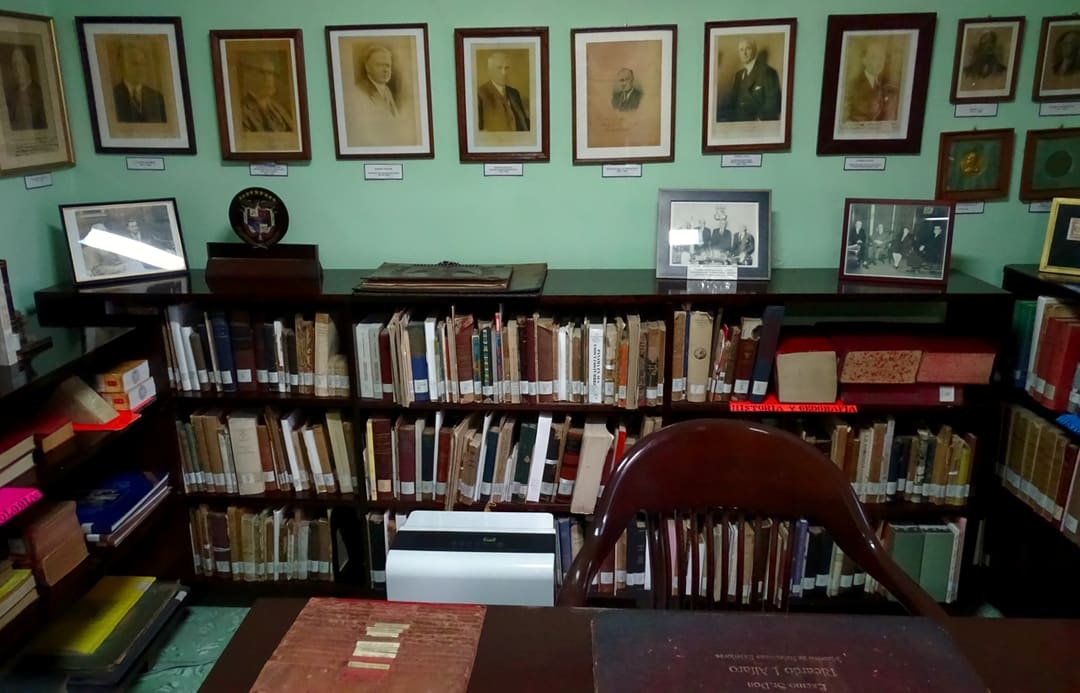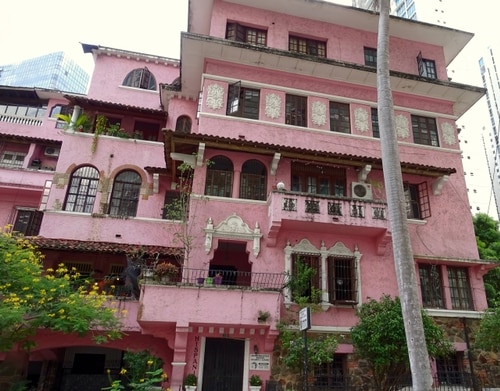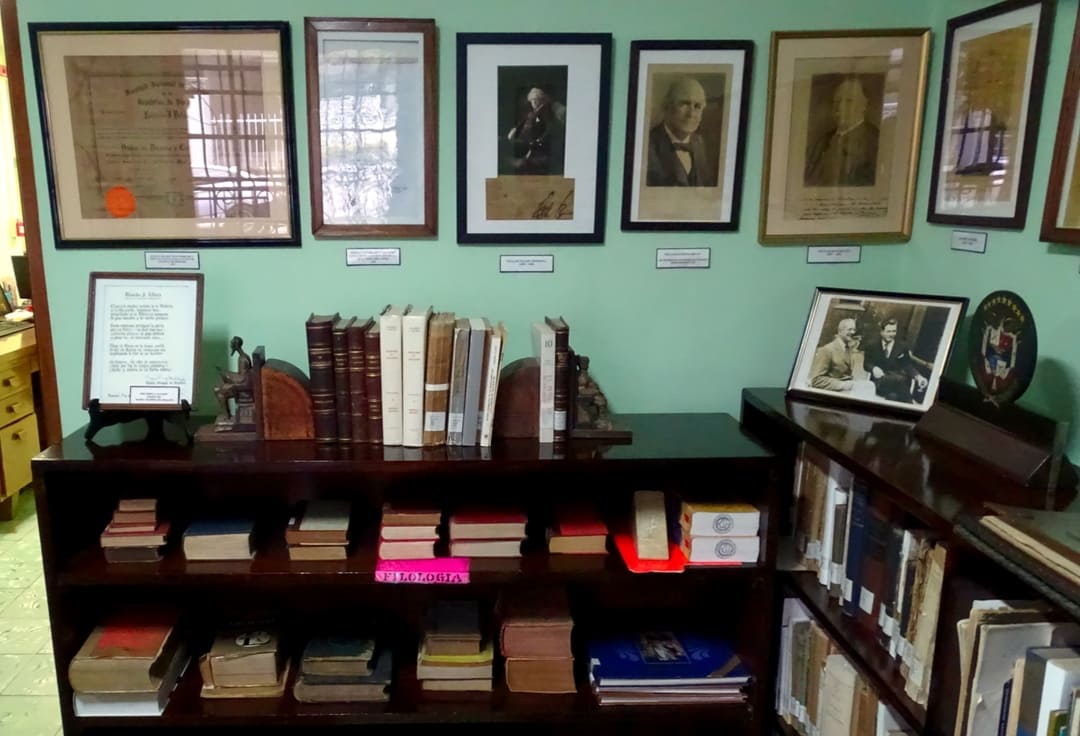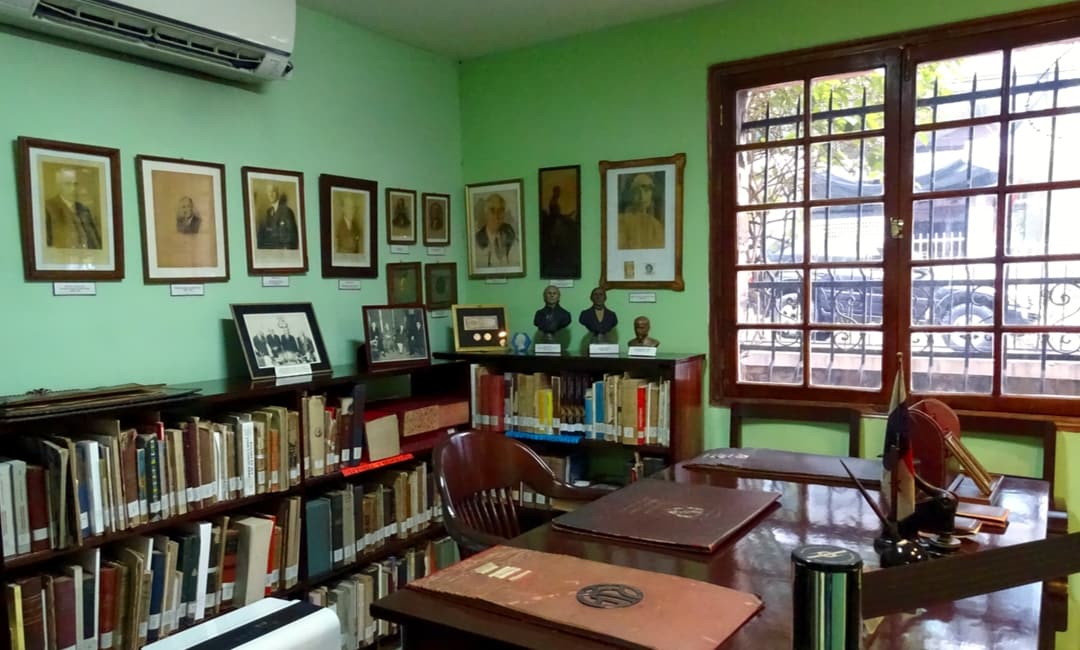The Ricardo J. Alfaro Archive remained in his custody, with the sole exception of the archives corresponding to the period in which Alfaro served as President of the Republic.
At the end of that period, Alfaro sent the presidential archives to the National Archive of Panama. , in whose custody they remained until 1937.
On 1937, the Director of the National Archive, Juan Antonio Susto, obtained authorization from the President of the Republic, Dr. J. Demosthenes Arosemena, for the presidential archive of Dr. Alfaro and the of his predecessor, Eng. FH Arosemena, were returned to their respective authors, as they were the only files of their kind that had been sent to the National Archive.
As Ricardo J. Alfaro maintained residence abroad, he authorized Don Juan Antonio Susto "so that in his capacity as Perpetual Secretary of the Academy of History, he may retain it in his power until further notice."

The fund acquired its definitive location in 1943 when Dr. Alfaro returned to Panama, took possession of the archive of his presidential term, established his residence in the Hispania Building and his office on the ground floor of the same building.
Subsequently, upon the death of Dr. Alfaro in 1971, the Archive remains in the custody of the direct heirs of Dr. Alfaro.

In 1993, through a consultation initiated by members of the Alfaro family, the National Institute of Culture resolved: "Declare the Ricardo J. Alfaro Archive as a Historical Document of national interest."
In this way, the legal process begins that culminates in the enactment of Law No. 29 of December 19, 1994, by which "documents and historical assets of national interest and an integral part of the patrimony of the Nation, the Archive and the movable objects of Doctor Ricardo J. Alfaro. ”
This same Law designated the National Institute of Culture as custodian of this heritage. Through the Agreement of May 3, 2000, the National Institute of Culture granted the Ricardo J. Alfaro Foundation the responsibility of guarding, preserving and managing the movable objects located in the Museum, Ricardo J. Alfaro Archive, in the same place where Dr. Alfaro kept his personal office.

It is interesting that this law, in effect, is the ninth and last link in a chain of events, ideas, proposals and projects started in 1932, related to the custody of the Alfaro archive.
Three proposals were of American origin and the rest of national origin. Seven proposals (including foreign ones) came to the knowledge of Dr. Alfaro himself and the pertinent documents are part of the archive.
Two projects arose after Alfaro's death, and their respective documentation has been incorporated into the archive.

The Ricardo J. Alfaro Archive remained in his custody, with the sole exception of the archives corresponding to the period in which Alfaro served as President of the Republic.
At the end of that period, Alfaro sent the presidential archives to the National Archive of Panama. , in whose custody they remained until 1937.

Act of Independence of the Isthmus of Panama made by Luis Ramón Alfaro and delivered to the Municipal Council of Panama in the year 1890.
In the absence of the original Act of 1821 Luis Ramón Alfaro decided to draw up a document alluding to the date.
On 1937, the Director of the National Archive, Juan Antonio Susto, obtained authorization from the President of the Republic, Dr. J. Demosthenes Arosemena, for the presidential archive of Dr. Alfaro and the of his predecessor, Eng. FH Arosemena, were returned to their respective authors, as they were the only files of their kind that had been sent to the National Archive.
As Ricardo J. Alfaro maintained residence abroad, he authorized Don Juan Antonio Susto "so that in his capacity as Perpetual Secretary of the Academy of History, he may retain it in his power until further notice."


The fund acquired its definitive location in 1943 when Dr. Alfaro returned to Panama, took possession of the archive of his presidential term, established his residence in the Hispania Building and his office on the ground floor of the same building.
Subsequently, upon the death of Dr. Alfaro in 1971, the Archive remains in the custody of the direct heirs of Dr. Alfaro.
In 1993, through a consultation initiated by members of the Alfaro family, the National Institute of Culture resolved: "Declare the Ricardo J. Alfaro Archive as a Historical Document of national interest."
In this way, the legal process begins that culminates in the enactment of Law No. 29 of December 19, 1994, by which "documents and historical assets of national interest and an integral part of the patrimony of the Nation, the Archive and the movable objects of Doctor Ricardo J. Alfaro. ”
This same Law designated the National Institute of Culture as custodian of this heritage. Through the Agreement of May 3, 2000, the National Institute of Culture granted the Ricardo J. Alfaro Foundation the responsibility of guarding, preserving and managing the movable objects located in the Museum, Ricardo J. Alfaro Archive, in the same place where Dr. Alfaro kept his personal office.


It is interesting that this law, in effect, is the ninth and last link in a chain of events, ideas, proposals and projects started in 1932, related to the custody of the Alfaro archive.
Three proposals were of American origin and the rest of national origin. Seven proposals (including foreign ones) came to the knowledge of Dr. Alfaro himself and the pertinent documents are part of the archive.
Two projects arose after Alfaro's death, and their respective documentation has been incorporated into the archive.